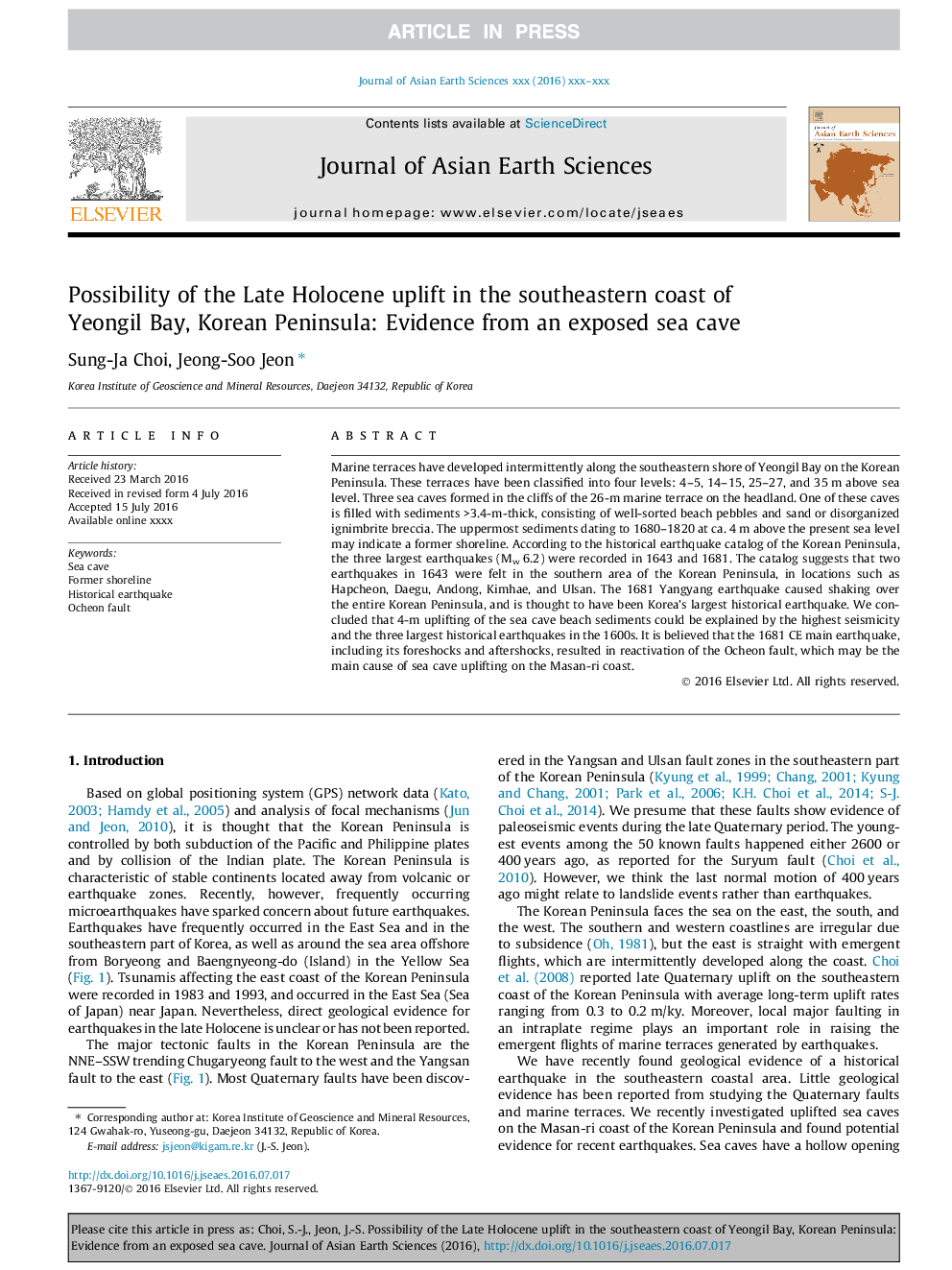| Article ID | Journal | Published Year | Pages | File Type |
|---|---|---|---|---|
| 5786225 | Journal of Asian Earth Sciences | 2016 | 9 Pages |
Abstract
Marine terraces have developed intermittently along the southeastern shore of Yeongil Bay on the Korean Peninsula. These terraces have been classified into four levels: 4-5, 14-15, 25-27, and 35Â m above sea level. Three sea caves formed in the cliffs of the 26-m marine terrace on the headland. One of these caves is filled with sediments >3.4-m-thick, consisting of well-sorted beach pebbles and sand or disorganized ignimbrite breccia. The uppermost sediments dating to 1680-1820 at ca. 4Â m above the present sea level may indicate a former shoreline. According to the historical earthquake catalog of the Korean Peninsula, the three largest earthquakes (Mw 6.2) were recorded in 1643 and 1681. The catalog suggests that two earthquakes in 1643 were felt in the southern area of the Korean Peninsula, in locations such as Hapcheon, Daegu, Andong, Kimhae, and Ulsan. The 1681 Yangyang earthquake caused shaking over the entire Korean Peninsula, and is thought to have been Korea's largest historical earthquake. We concluded that 4-m uplifting of the sea cave beach sediments could be explained by the highest seismicity and the three largest historical earthquakes in the 1600s. It is believed that the 1681Â CE main earthquake, including its foreshocks and aftershocks, resulted in reactivation of the Ocheon fault, which may be the main cause of sea cave uplifting on the Masan-ri coast.
Keywords
Related Topics
Physical Sciences and Engineering
Earth and Planetary Sciences
Geology
Authors
Sung-Ja Choi, Jeong-Soo Jeon,
